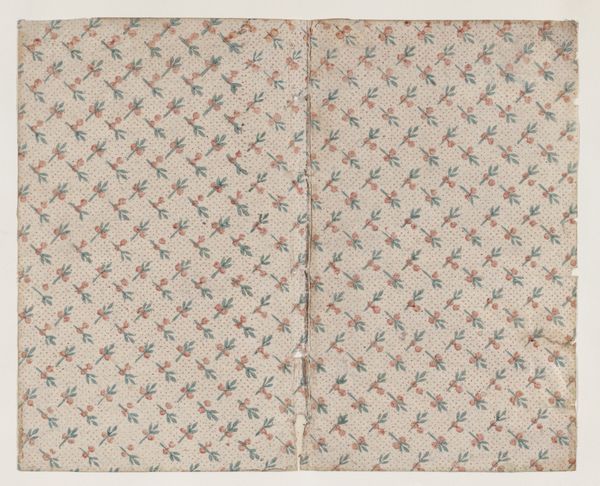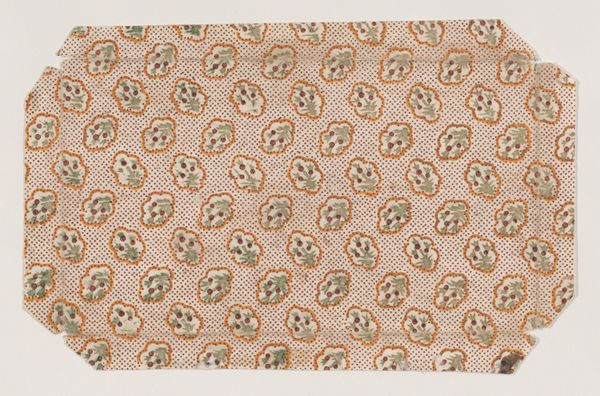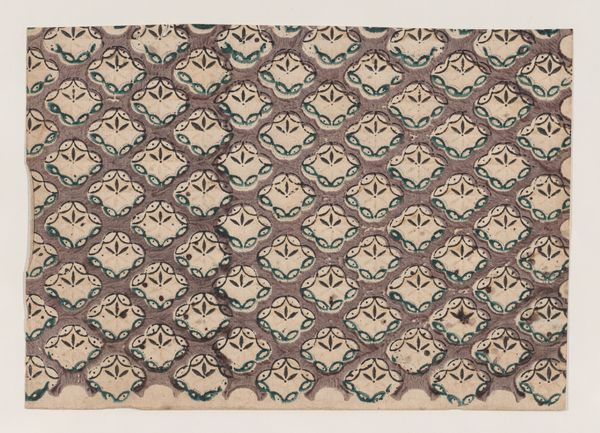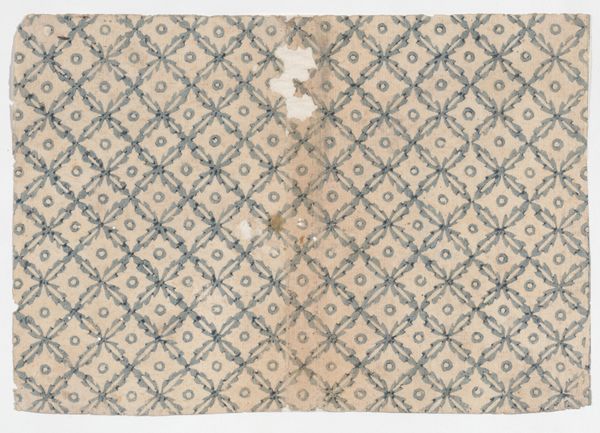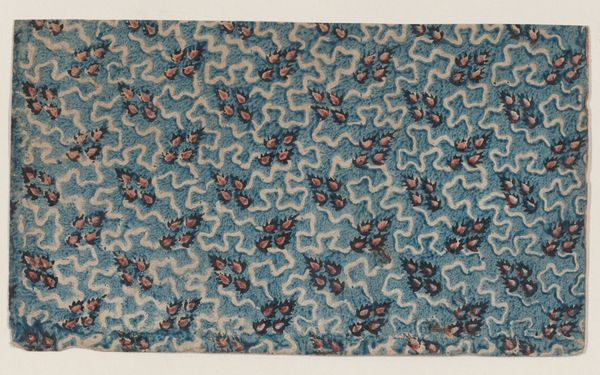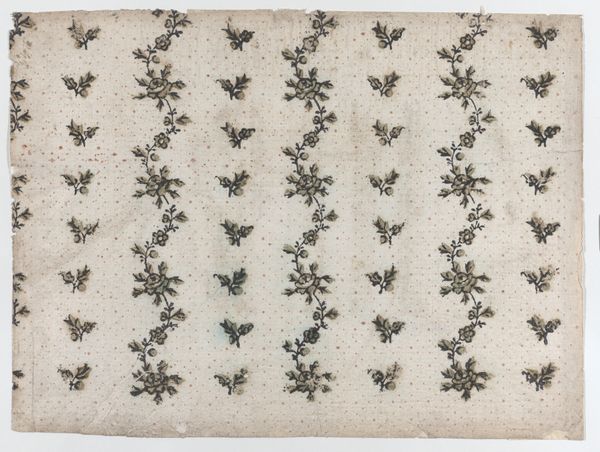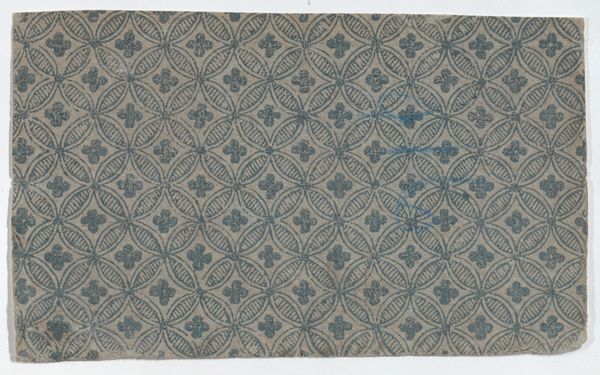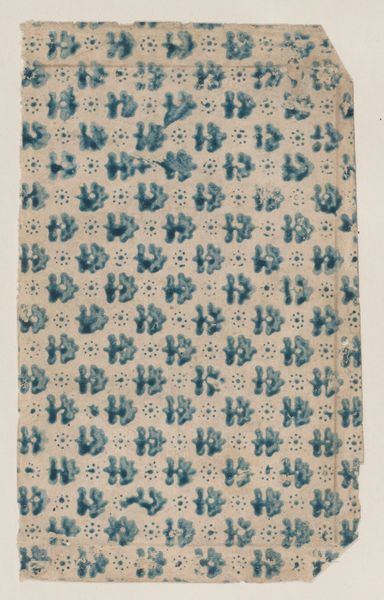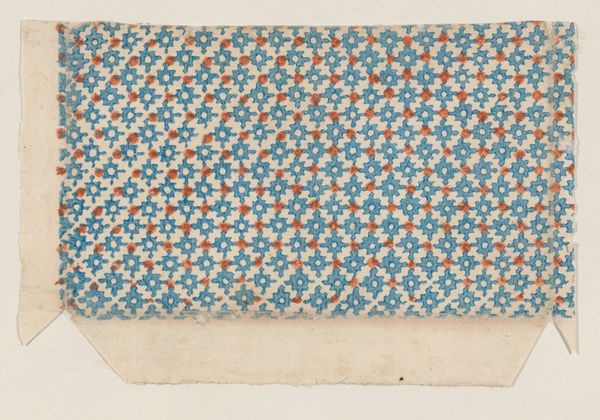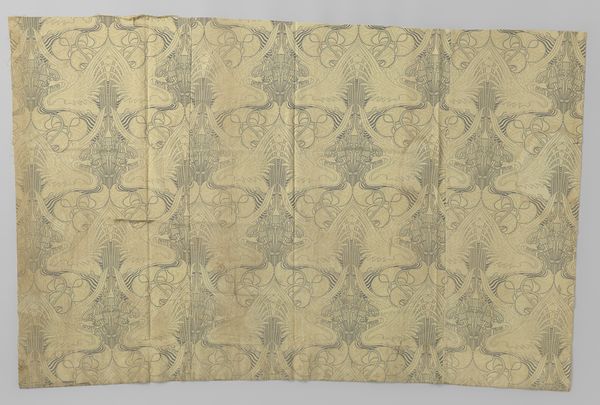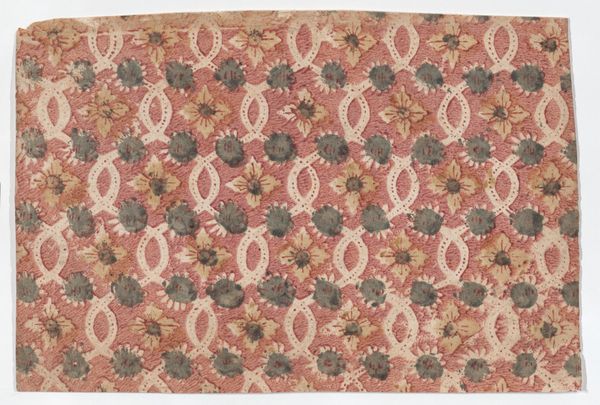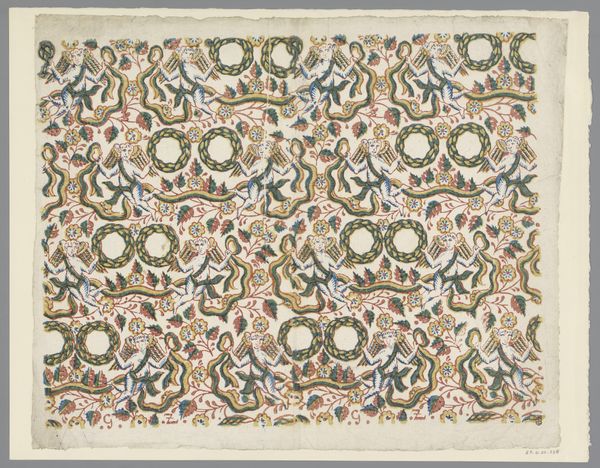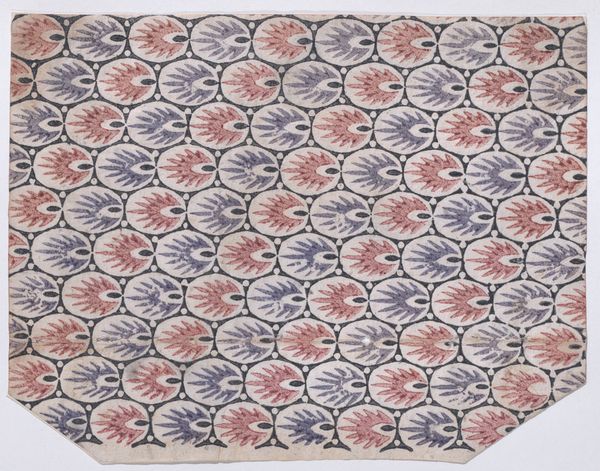
drawing, print, textile, paper
#
drawing
#
organic
# print
#
textile
#
paper
#
pattern design
#
folk-art
#
organic pattern
#
textile design
Dimensions: Sheet: 4 13/16 × 7 1/2 in. (12.2 × 19 cm)
Copyright: Public Domain
Curator: Looking at this lovely little design, it gives off an impression of naive charm, almost childlike. It’s a delightful all-over pattern in soft blues and pinks. Editor: Yes, it's charmingly unsophisticated! We’re looking at what’s called “Sheet with overall floral and dot pattern,” dating from somewhere in the 19th century. The maker is unknown, which often tells its own story about how these designs were used and valued, or not. Curator: I see a field of stylized berry sprigs, or possibly cherries, interspersed with what look like tiny polka dots. Berries can represent bounty and nourishment, perhaps speaking to an optimistic view of nature or even the hoped-for prosperity of a household. Editor: I suppose this design was for fabric, right? One imagines dresses for children or lining for quilts? What do we know about this sort of domestic craft at the time? Curator: Precisely! This work, executed on paper, might have served as a design prototype for textiles or wallpapers. Its existence raises a vital question: To what extent were women, frequently marginalized from the formal art world, engaged in artistic expression within their homes and communities through pattern design? Editor: Absolutely. The anonymity says a lot, doesn't it? This image quietly resists those kinds of exclusions; folk art operating outside academic and institutional channels, imbued with personal and local meanings, even feminine experience of design, relegated to functional materials instead of acknowledged as Art, capital-A Art. Curator: Indeed. Consider the symbolic economy at play. On the one hand, such work supported burgeoning industrial textile production in both Europe and America, impacting consumer culture. On the other, though anonymous, it was a means by which the so-called "domestic sphere" could influence aesthetics. Editor: Right. Now I read these polka dots as feminine markers almost like endless drops of rouge on fair skin in Rococo portraiture, a demure but sensual mark, not subversive exactly, but definitely distinct. And that pink isn't quite innocent either. What stories might those fabrics tell? Curator: It’s fascinating how a humble design on paper opens up into such layers of social history! Editor: Exactly, and that close attention to material details always speaks louder than any thesis about gender and consumption in the 19th century. Thanks to those small things!
Comments
No comments
Be the first to comment and join the conversation on the ultimate creative platform.
